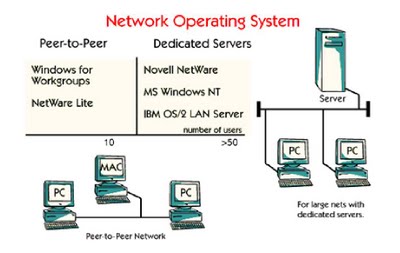What Is a Computer Operating System?
Computers use low-level software called an operating system (O/S) to help people build and run their own programs. Operating system software runs not just on laptop computers but also on cell phones, network routers and other so-called embedded devices.
Types of Operating Systems
The best-known operating systems are those used on personal computers:
- Microsoft Windows
- Mac OS X
- Linux
Some operating systems are designed for certain types of equipment, such as
- Google Android (a variant of Linux), and Symbian - for cell phones
- Solaris, HP-UX, DG-UX, and other variants of Unix - for server computers
- DEC VMS (Virtual Memory System) - for mainframe computers
Other operating systems enjoyed a period of notoriety but are of only historical interest now:
- Novell Netware was a popular O/S for PCs in the 1990s
- IBM OS/2 was an early PC O/S that competed with Microsoft Windows for a time but had limited success
- Multics was an especially innovative operating system created in the 1960s for mainframes, that influenced the later development of Unix
Network Operating Systems
A modern O/S contains much built-in software designed to simplify networking of a computer. Typical O/S software includes an implementation of TCP/IP protocol stack and related utility programs like ping and traceroute. This includes the necessary device drivers and other software to automatically enable a device's Ethernet interface. Mobile devices also normally provide the programs needed to enable Wi-Fi, Bluetooth, or other wireless connectivity.
The early versions of Microsoft Windows did not provide any computer networking support. Microsoft added basic networking capability into its operating system starting with Windows 95 and Windows for Workgroups. Microsoft also introduced its Internet Connection Sharing (ICS) feature in Windows 98 Second Edition (Win98 SE). Contrast that with Unix, which was designed from the beginning with networking in view. Nearly any consumer O/S today qualifies as a network operating system due to the popularity of the Internet.
Embedded Operating Systems
A so-called embedded system supports no or limited configuration of its software. Embedded systems like routers, for example, typically include a pre-configured Web server, DHCP server, and some utilities but do not allow the installation of new programs. Examples of embedded operating systems for routers include:
- Cisco IOS (Internetwork Operating System)
- DD-WRT
- Juniper Junos
An embedded OS can also be found inside an increasing number of consumer gadgets including phones (iPhone OS), PDAs (Windows CE), and digital media players (ipodlinux).

Share great information about your blog , Blog really helpful for us . We read your blog , share most useful information in blog . Thanks for share your blog here .Cisco SG300
ReplyDeleteGrammar, vocabulary, tenses, indirect speech, passive sentences must always be keep in mind while writing a blog. Everyone must read this blog. This is going to help everyone.APC LCD Console
ReplyDeleteFantastic post, very informative. I wonder why the other specialists of this sector do not notice this. You must continue your writing. I'm confident, you have a great readers' base already!HTML/CSS
ReplyDeleteI enjoyed reading this blog. in my opinion, everything was perfectly written there as well as few small tips are also can be taken as healthy suggestion. Descriptive informative content written in this blog is very useful.server
ReplyDeleteNice Post. I like your blog. Thanks for Sharing.
ReplyDeletePing speed test
Involves the physical arrangement of devices in a network, determining how they are connected, e.g., bus, ring, star, or mesh topologies.isaimini
ReplyDelete